I have again been chewing on the “Universal Design for Learning” idea for the last couple of days. This was prompted by us agreeing that we want to let participants in an upcoming course play UDL Bingo, where participants check boxes if they notice that we are doing something to make the course more accessible, and we can then discuss what we did do and what we could and maybe should have done. In order to improve the old bingo (which I am not linking to here, because the new one comes below!), I went back to the UDL guidelines (http://udlguidelines.cast.org). I still find them slightly overwhelming, but here is a version that now makes sense in my head (I always have to re-compile complex information in order to process it…) and that I think I might be able to teach in the 45 or so minutes that I have available in that specific course.
Here we go, this is my understanding of UDL in a nutshell!
We want our students to be, or to become, purposeful and motivated, resourceful and knowledgeable, and strategic and goal-directed. Universal Design for Learning acknowledges that all learners are different, and that in order to reach that goal, everybody might need varying levels of support for all three areas: 1. Understanding why they might want to learn something, 2. figuring out what it is they are supposed to learn, and then 3. dealing with how to manipulate it while learning. In order for students to not having to disclose disabilities, caring responsibilities, financial stresses, any other obstacles they face, or anything else they might not want to disclose, we can prepare our instruction in such a way that we provide support in those three areas at different levels. At the first level, we provide different options so that everybody hopefully finds something that works for them. At the second level, we help students figure out what works best for them and to become more independent, and on the top level students practice strategies to monitor and regulate their learning that work best for them.
So far, so good. But what does that mean?
Why should students even bother learning what we want them to learn? (See figure below)
If we want purposeful and motivated students, it is very helpful to help them see the purpose of what we want them to learn. This means on the one hand relating content to the ILOs and to the bigger picture of their future profession and goals in life, but on the most basic levels it means providing multiple entry points that might be interesting and relevant to different students, and letting them choose as much as possible when it comes to what examples they want to focus on, how they want to approach them, who with, when, etc.. Wanting students to focus on learning also means that it is necessary to remove possible distractions, like wondering whether they belong, whether they are welcome, whether they are safe.
For students that have started off on that path, we need to offer support to keep on the right track. We can remind them of their goals and why they matter, for example by referring back to visualizations that they did earlier. We can encourage a growth mindset and help facilitate constructive team work.
At the highest level, we provide students with the opportunity to practice reflecting, goal-setting and self-regulation, and support those by offering tools like journals or feedback.
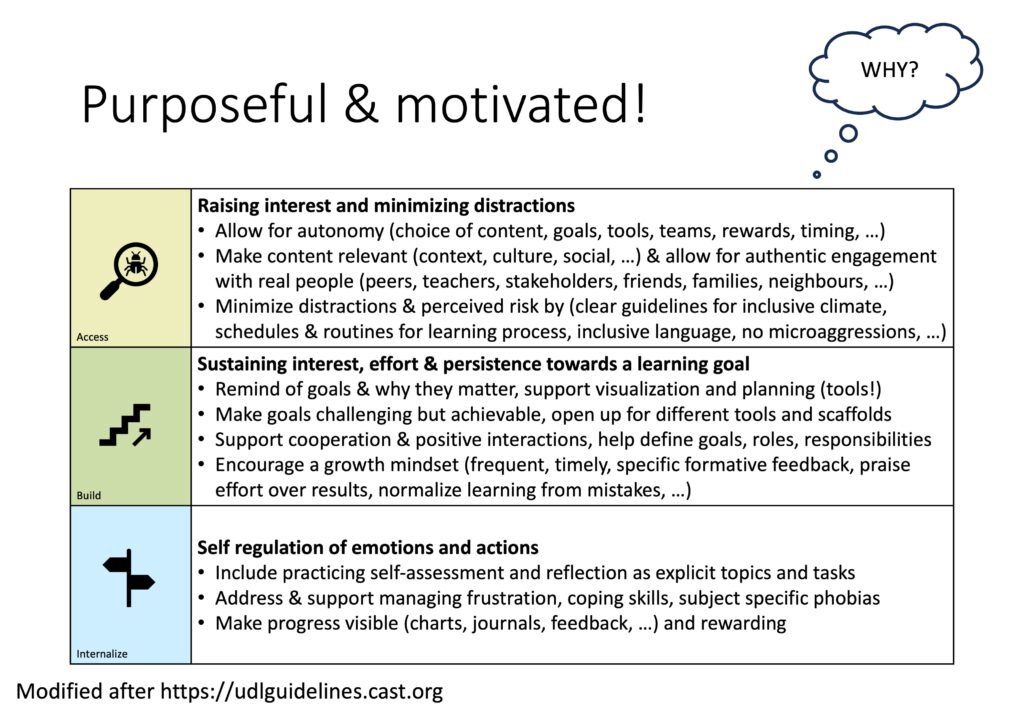
What is it that we want students to learn? (See figure below)
If we want our students to become resourceful and knowledgeable, we can work on making information accessible for everybody. This can be as easy as providing students with files in formats that can easily be adjusted in terms of e.g. text size, font, contrast, or to offer alternatives, e.g. transcripts of podcasts.
On the next level, we can support students to learn to access and translate information, by creating dictionaries of technical terms, or translating concepts into diagrams.
On the highest level, we help students integrate the new learning with what they knew already, what they see around them, figure out where it might not match, and let them choose between pathways.
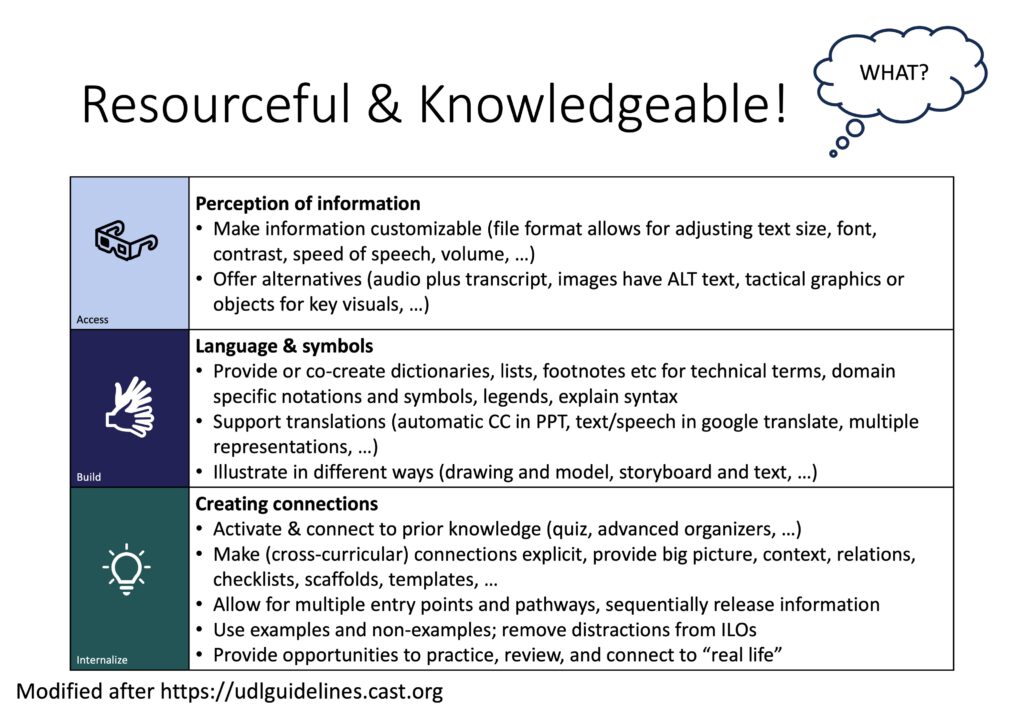
How do we want students to interact with and manipulate what we are trying to teach? (See figure below)
How can we help students become strategic and goal-directed?
First, it is important to let them express themselves in a way that is easy for them. This might be using technological solutions like voice-to-text or video-instead-of-essay, or we might remove unnecessary time pressure and make due dates flexible.
We can then help students find the kind of tools that work best for them to produce their best work (Grammar checkers? Automated reminders? I’m a big fan of apps where I have to maintain a streak — easiest way for me to really do something every day!). We can introduce them to different tools and provide them with various mentors.
And lastly, we can help them learn how to set their own goals and strategies that will lead them there, what tools they need, how to estimate how long something will really take and how much rest they really need, how to make their progress visible and what advice or feedback they really need.
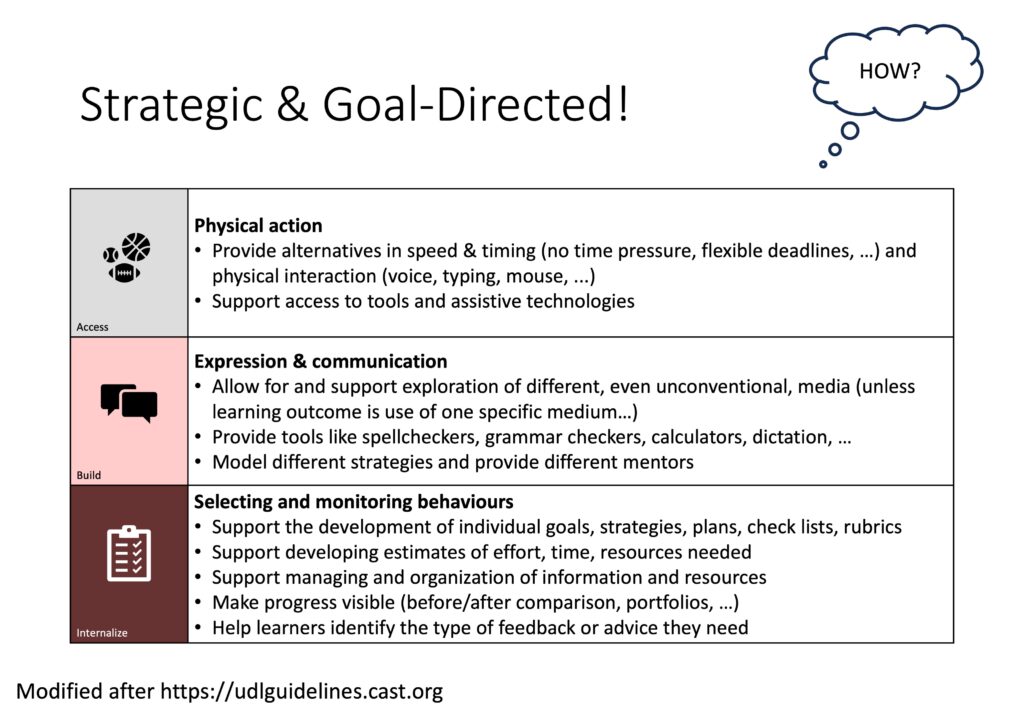
So far, so good! Breaking it down like this, it is still pretty complex, but at least to me, it seems more manageable now. So now on to the bingo!
In the bingo card below, I have added some explicit “best practice” prompts in white boxes, plus the headings of all the nine steps above. Those are also listed in the table to the right, where there is space for notes of ideas that participants want to implement for each of those categories. So now my plan is to talk participants through all of the above (most likely with less busy slides than the images I have included…), ask for suggestions of what they think either should be implemented in every course, or what they might want to try themselves because it sounds appealing to them. And then I’m going to ask them to “play” the bingo — check boxes whenever they see me or my co-teacher do something that checks one of the boxes. I am pretty confident that we will be checking a lot of the boxes pretty quickly, but I am very curious if participants will think that, too, and how the discussions will go!
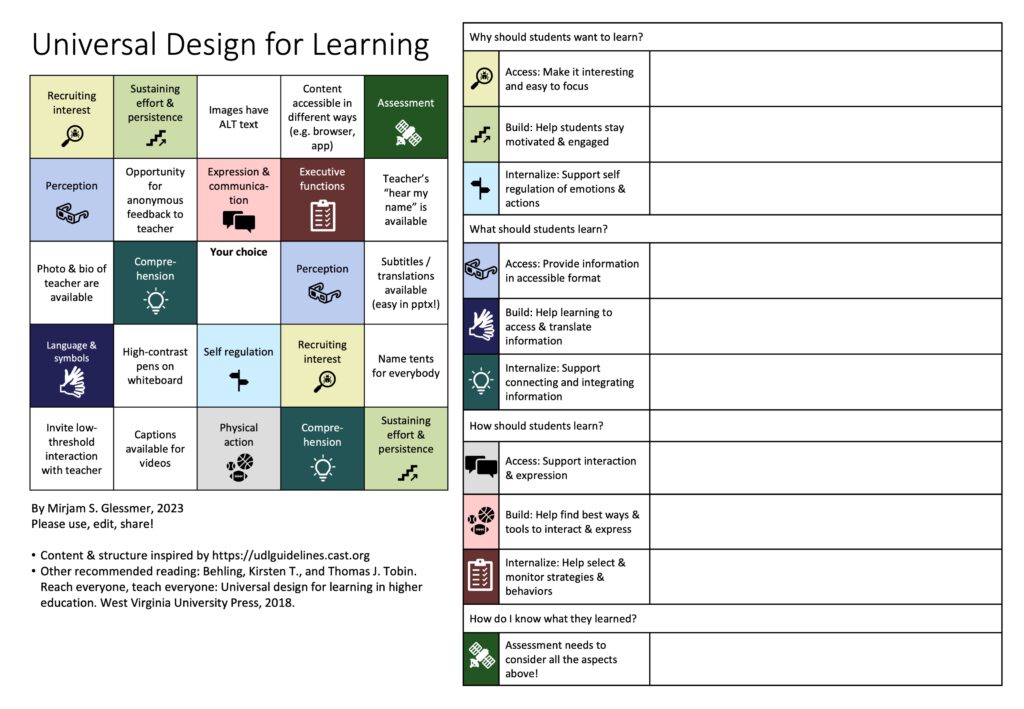
I am very much looking forward to feedback — what do you think? What can I do better? :-)
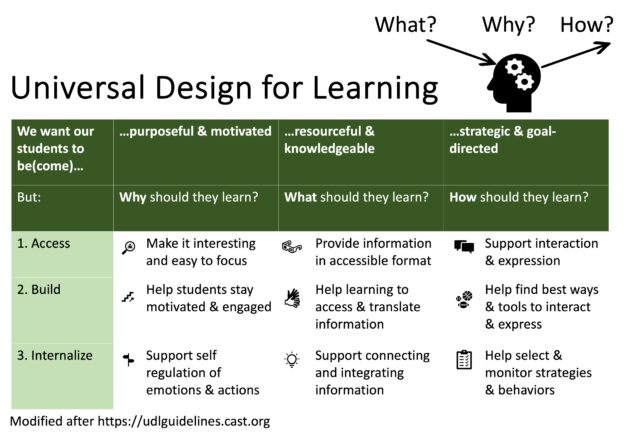
Pingback: How to create an Activity Bingo for teaching purposes - Adventures in Oceanography and Teaching
Pingback: An office as an analogy to explain the three brain functions - Adventures in Oceanography and Teaching